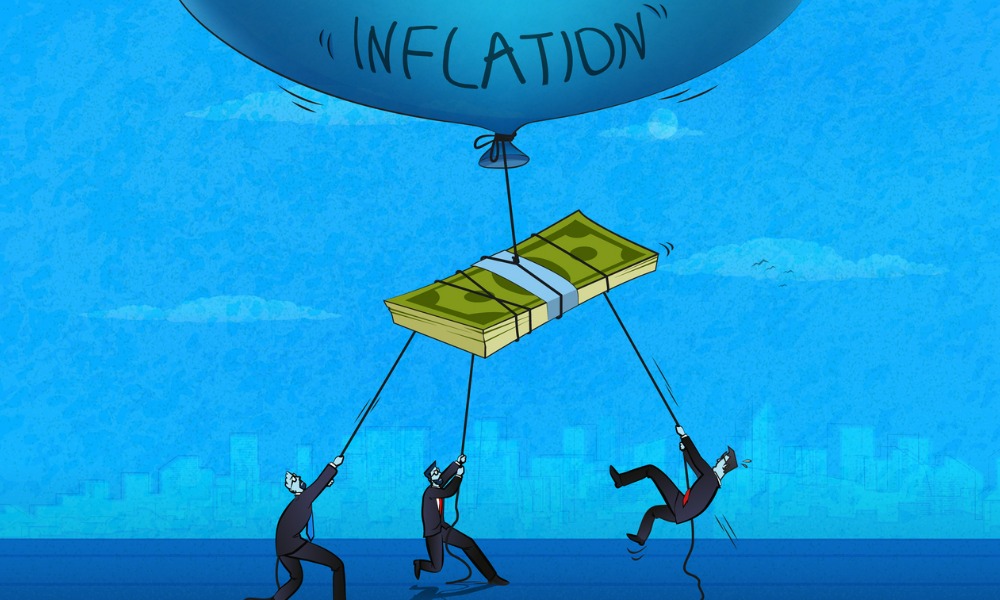The bank is "doggedly determined to deliver" OCR hikes and it is "likely to be too much," they say

The Reserve Bank is being “extreme” and is “hell bent” on squashing inflation, as it expects the OCR to hit 5.5%, in order to force inflation back within its mandated 1-to-3% year-on-year target band, Kiwibank economists said.
In Kiwibank’s latest Our Take publication, chief economist Jarrod Kerr, senior economist Jeremy Couchman, and economist Mary Jo Vergara said, “a move beyond 5% is a step too far.”
They said, “what the RBNZ will do,” that is, hike to 5.5%, is “beyond” what they think the RBNZ should do, as they “place a much larger weight on the global slowdown, higher interest rates are effective, and Kiwi are feeling the pinch now,” interest.co.nz reported.
“Seemingly at odds with international developments,” RBNZ has upped the ante, the economists said.
“We find ourselves factoring in what the RBNZ is doggedly determined to deliver, and it is likely to be too much,” they said. “We’re worried about the impact on Kiwi households and businesses. The RBNZ’s forecast recession could easily turn into another economic accident. First, there was too much easing, and now there is too much tightening.”
Kerr, Couchman, and Vergara said it was the housing market that has borne the brunt of tightening credit conditions.
“Sales activity has fallen sharply, and the supply of listed housing has risen to surpass pre-COVID levels,” they said. “Across Aotearoa, house prices were down 11% year-on-year in October and have fallen 12% from the peak. Prices have fallen back to levels seen at the start of 2021. Unfortunately, house price declines have further to run.
“The RBNZ’s desire to quickly hike the cash rate to 5.5%, with a 75bp move in February on the cards, has already seen mortgage rates take another leg higher. Higher mortgage rates will weigh on the market over summer. We are still expecting house prices to be 13% lower in the final quarter of 2022 compared to a year earlier.
“However, annual house price declines are expected to reach 15% in the first quarter of next year. The deeper fall now means our new forecast represents a 21% drop from peak to trough and take prices back to levels seen in late 2020.”
The Kiwibank economists said there are already signs of a softening in spending, interest.co.nz reported.
“Our spending tracker showed a third of the categories we monitor dropped in the volume of transactions made over the September quarter; and all were concentrated within discretionary spending,” they said. “We expect this to continue. Residential property investment is also under pressure. Construction has helped the economy power through the COVID lockdowns. But as residential construction quietens down, Kiwi economic activity will slow.
“The sheer weight of rising interest rates is set to push the economy into recession from the middle of next year. We are forecasting a three-quarter contraction in activity from the June quarter to leave the economy 0.7% smaller at the end of 2023.”
The economists predicted interest rates to hold near current levels into 2023, and then fall over the year ahead.
“We expect central bank tightening to run its course over the next six months,” they said. “Markets will position for the next move, of course, being rate cuts. The persistence of inflation, and the need for central banks to see a sharp deceleration in price pressure, is likely to mean cash rates may hold for a while.
“We suspect the tide is already turning, and central banks will be in a position to ease monetary policy by the end of 2023. We see wholesale rates declining over the year ahead. The two-year swap rate is likely to start 2023 over 5% but end the year around 4.4-4.5% (that’s a full 100bps off the recent highs). Interest rate curves are likely to remain deeply inverted, with long-end rates factoring in much lower growth and inflation rates. We are then likely to see a sharp bull-steepening in interest rate curves as rate cuts are ultimately delivered.”
Given the balance of risks, “with downside risks significantly outweighing upside risks,” the Kiwibank economists said positioning for lower interest rates and a lower currency “makes sense,” interest.co.nz reported.
Do you also think that a move beyond 5% is a step too far? Share your views in the comments section below.



